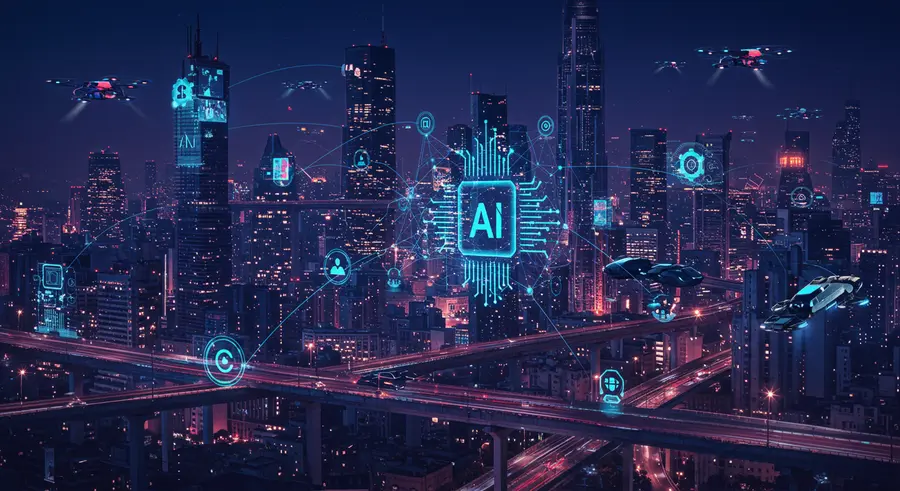Appearance

Hello, innovators and tech enthusiasts! 👋 Have you ever wondered how our connected world is getting smarter, faster, and more efficient? Today, we're diving deep into a fascinating convergence of technologies: Edge AI and the Internet of Things (IoT). This powerful combination is not just a buzzword; it's a paradigm shift that's transforming industries and daily life as we know it!
🌟 What is Edge AI?
At its core, Edge AI refers to the deployment of Artificial Intelligence algorithms directly onto "edge" devices – physical devices located at or near the source of data generation, such as sensors, cameras, smart appliances, or industrial machinery. Traditionally, IoT devices would collect data and send it to a centralized cloud for processing and analysis. While effective, this approach can introduce latency, consume significant bandwidth, and raise privacy concerns.
Edge AI flips the script! 🚀 By bringing AI capabilities to the device itself, decisions can be made instantaneously, locally, and often without needing to communicate with the cloud. This immediate processing capability is what makes Edge AI so revolutionary for IoT.
🧠 Why is Edge AI Crucial for IoT?
The synergy between Edge AI and IoT addresses several critical challenges:
- Real-time Decision Making: Imagine an autonomous vehicle needing to identify an obstacle and react in milliseconds. Sending data to the cloud and waiting for a response is simply not an option. Edge AI enables real-time analytics and decision-making on the device, crucial for applications where latency can have serious consequences.
- Reduced Bandwidth and Cloud Costs: With billions of IoT devices generating zettabytes of data, transmitting all of it to the cloud for processing is expensive and bandwidth-intensive. Edge AI allows for pre-processing, filtering, and analysis of data locally, sending only critical or summarized information to the cloud, significantly reducing operational costs.
- Enhanced Data Privacy and Security: Processing sensitive data locally on the device reduces the risk of data breaches and enhances privacy, as less raw data is transmitted over networks or stored in centralized clouds. This is particularly vital in sectors like healthcare and surveillance. (For more on IoT security, check out our catalogue page on IoT Security Challenges and Best Practices).
- Offline Capability: Edge AI-enabled devices can continue to function intelligently even when internet connectivity is intermittent or unavailable, ensuring uninterrupted operation in remote or challenging environments.
💡 Practical Applications and Use Cases
Edge AI is already making a tangible impact across various sectors:
- Smart Manufacturing & Industrial IoT (IIoT):
- Predictive Maintenance: Sensors on machinery analyze vibrations, temperature, and other parameters in real-time. Edge AI models detect anomalies indicative of potential failures, triggering alerts for proactive maintenance, minimizing downtime, and extending equipment lifespan.
- Quality Control: AI-powered cameras on assembly lines perform real-time visual inspection of products, identifying defects instantly without human intervention.
- Healthcare:
- Wearable Health Monitors: Devices can analyze vital signs on-device, detecting irregular heartbeats or falls and alerting caregivers immediately, even without constant cloud connection.
- Medical Imaging Analysis: Edge AI assists in faster, preliminary analysis of medical images (e.g., X-rays, MRI scans) at the point of care, providing quick insights for medical professionals.
- Smart Cities & Transportation:
- Traffic Management: Cameras with Edge AI analyze traffic flow, pedestrian movement, and even detect accidents in real-time, optimizing traffic light timings and rerouting vehicles to reduce congestion.
- Autonomous Vehicles: This is perhaps one of the most prominent examples. Self-driving cars rely heavily on Edge AI to process vast amounts of sensor data (from cameras, LiDAR, radar) instantly to navigate, avoid obstacles, and make split-second driving decisions.
- Smart Homes:
- Security Systems: Smart cameras with Edge AI can differentiate between pets, residents, and intruders, reducing false alarms and enhancing home security.
- Energy Management: Smart thermostats learn household patterns and adjust heating/cooling based on occupancy detected by local sensors.
🛣️ The Road Ahead
The future of Edge AI in IoT is incredibly promising. As AI models become more efficient and hardware continues to advance (think specialized AI chips), we'll see even more sophisticated applications emerging. The integration of 5G connectivity will further accelerate this trend, enabling seamless data flow between edge devices and the broader network.
The combination of Edge AI and IoT is creating a world where devices are not just connected, but truly intelligent and autonomous, paving the way for unprecedented levels of efficiency, safety, and innovation. Get ready for a smarter future, driven by intelligence at the very edge! ✨